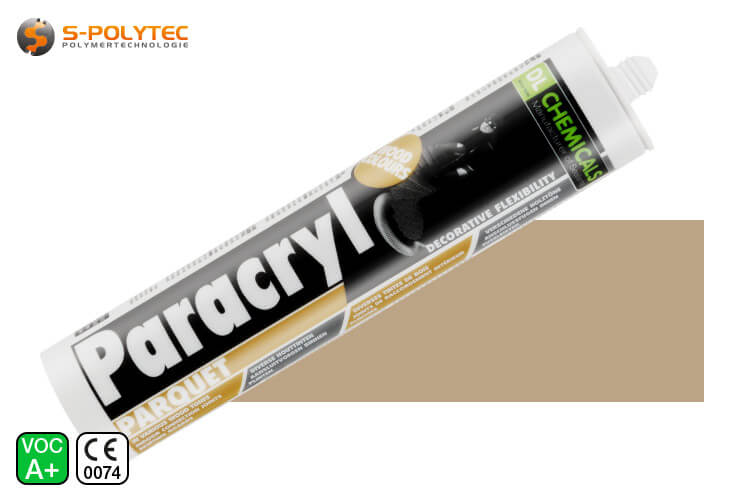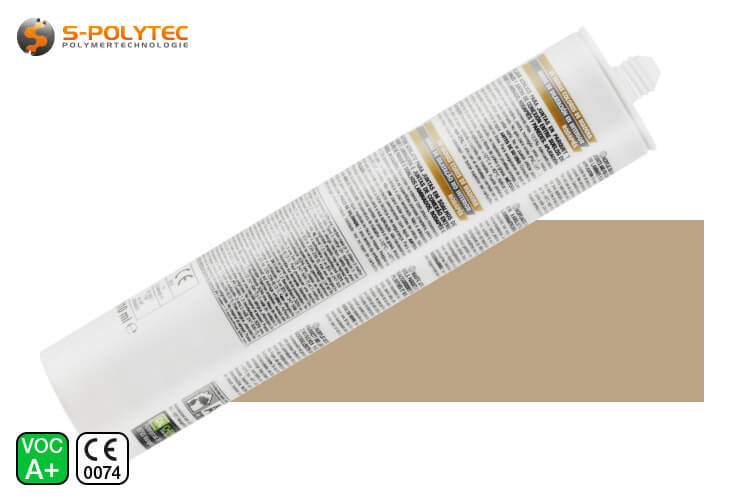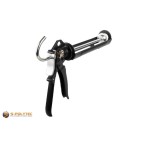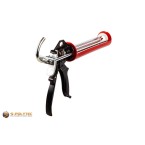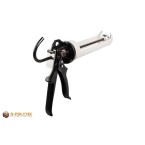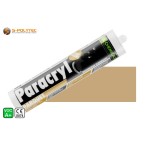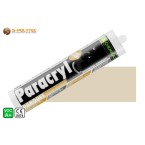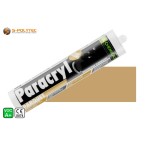
Parquet acrylic Paracryl Parquet dark beige
The Parquet Acrylic Parquet Dark Beige is suitable for sealing and filling cracks in parquet, floorboards, laminate or panels, and is easy to sand or paint over with paints and varnishes.
✓ Very simple processing
✓ Ideal for yellow-brown wood
✓ Contains no silicone
✓ Contains no solvents ✓ Excellent adhesion
The acrylic sealant Paracryl Parquet in dark beige is ideal for yellow-brown wood types such as pine, chestnut, cherry, walnut, etc.
The item is in stock
Dispatch within 2-3 working days
- calculate the price
- from 5 Items €4.40/ pc. (Base Price €14.20/ l)
- from 10 Items €4.05/ pc. (Base Price €13.05/ l)
- from 25 Items €3.63/ pc. (Base Price €11.71/ l)
All prices include 19% VAT.
€4.90 / pc.
0,5700 kg / pc.
All prices include 19% VAT.
- Description
Paracryl Parquet Dark Beige - The acrylic for yellow-brown wood
Ideal for pine, chestnut, cherry and many more. ✓ Without silicone ✓ Very good adhesion ✓
Our Paracryl Parquet in dark beige is a sealant for parquet and laminate indoors that is suitable for all types of wood that have a yellowish, brown wood colour. Parquet Acrylic has excellent adhesion to all porous substrates, metal and ceramics, ensuring long-lasting seals for skirting boards and wall connection joints with perfect flank adhesion for all types of wooden floors. As an acrylic sealant, Paracryl Parquett can also be used as a filler for cracks, holes, indentations or chipping of stairs, wooden railings, trusses or wooden wall cladding.
The Parquett acrylic in dark beige is available at favourable prices with quantity discounts starting at 5 pieces.
-
Scope of delivery:
- 1 x Paracryl Parquet Dark Beige 310ml Standard Cartridge
Properties of Paracryl Parquet Dark Beige
Paracryl Parquet is a ready-to-use, elastic sealant in a standard 310ml cartridge that can be inserted into any normal silicone gun to apply the acrylic. The parquet acrylic in dark beige is particularly suitable for grouting and sealing floor coverings made of wood materials, such as floorboards, parquet, wooden plasters and skirting boards as well as laminate and cork. The colour dark beige is most suitable for yellowish-brown wood types in order to achieve a joint that is as inconspicuous as possible. However, parquet acrylic can also be used as a filler for larger cracks, unevenness and defects such as knotholes, which are not uncommon in natural materials such as wood, in order to achieve a uniform, even surface.
The paste-like sealant with a density of 1.65 g/ml has a shore hardness of 36 after reaching final strength, which is significantly higher in direct comparison to a painter's acrylic with an average shore hardness of 10 - 15. This is particularly noticeable in the sandability of the acrylic, which is why parquet acrylic is much more suitable for touching up wood materials such as floorboards, beams and panelling that are to be painted over or varnished in a further work step.
Under normal conditions, parquet acrylic can only be used indoors. To ensure that this is also possible in living rooms and bedrooms without any concerns, we only use high-quality products for our acrylic sealants that meet the strict requirements of the VOC emission class. Paracryl Parquet is classified with the best rating A+ and does not emit harmful emissions either during processing or during or after curing. The acrylic contains no solvents and does not attack even sensitive surfaces. Furthermore, it is free of silicones, so that paintability is also ensured.
Technical data of Parquet Acrylic Paracryl in Dark Beige
- Material: Acrylic polymer
- Colour: Dark beige
- Skin formation: approx. 60-70 min. at 23°C
- Curing speed: approx. 0,5mm/24std. at 23°C
- Density: 1,65g/ml
- Shore hardness: 36 accordingly to ISO 868
- Elongation at break: 250% accordingly to ISO 8339
- Permissible deformation: max. 12,5% accordingly to ISO 11600
- Temperature resistance: -20 °C-+80 °C
- Processing temperature: +10 °C-+40 °C
- VOC-Emission class: A+
- Ageing resistance: Excellent
- UV resistance: Moderate
- Weather resistance: Moderate
- Storage capacity: 12 months (unopened)
NOTE: The shelf life of acrylic sealants refers to a storage temperature between +5 and +25°C. In addition, the cartridge should always be sealed airtight after use so that the sealant does not harden in the cartridge.
Application of acrylic sealant for yellow-brown wood
Apart from the areas of application, acrylic and silicone sealants are almost identical in processing. The only difference between the two sealants is the choice of smoothing agent, so in the case of silicones, soap solution or a special smoothing agent like our FUGENglatt, with acrylic, on the other hand, normal tap water is used to smooth joints. In both cases, a cartridge press is needed for application, as well as a suitable tool for removing the joint or smoothing the surface. Curing, on the other hand, is again done in different ways. While silicone needs sufficient humidity to cure, acrylic cures by evaporating water, so higher humidity tends to delay curing.
The parquet acrylic in dark beige is less reddish than beech or medium oak and is well suited in terms of colour to all yellow-brown wood species, which include pine, pear, cherry, sweet chestnut, larch, robinia or even ash. However, it is not only the type of wood that determines the colour, but also age, thunderstorms, environmental influences and glazes can have an effect on the colour of the wood. If the acrylic is sanded in further work steps and painted or varnished with a suitable colour, the colour of the acrylic does not matter. Depending on the colour and the additives contained, however, a compatibility test should be carried out in advance. Especially paints that contain solvents are not recommended for acrylic sealants.
-
Application examples for Paracryl Parquet Dark Beige
- The parquet acrylic in dark beige is ideal for yellow-brown wood types, for example pine, larch, robinia or ash
- The acrylic sealant is suitable for sealing connection joints in skirting boards and door frames indoors
- Paracryl Parquet Dark Beige is ideal for touching up planks, boards and beams before painting.
- The parquet acrylic is excellently suited for tables, shelves, wall and ceiling coverings made of wood in the interior
- and much more
The parquet acrylic is, like most acrylic sealants, water-soluble. This means that it can be smoothed very well with water as well as removed from substrates, clothing and tool surfaces. However, this is only true while the sealant is still soft and not cured. Otherwise, the sealant can only be removed mechanically by scraping or cutting it out with suitable tools.
NOTE: Parquet acrylic is neither suitable for outdoor use nor for areas of application where regular or prolonged contact with water cannot be ruled out. Acrylic can also only be used to a limited extent for sealing in sanitary areas, because the sealant is not fungus-inhibiting. A suitable silicone sealant should be used for such applications. For floor coverings made of PVC, vinyl or linoleum, parquet acrylic, which was specially developed for sealing and repairing wooden materials, is also not suitable.
- Additional Information
Additional Information
Product-ID ACR-0590-DBE Delivery Time Dispatch within 2-3 working days Adhesive type Parquet Acryllic EAN/GTIN 5413624010617 Weight 0.5700 filling quantity in ml 310 Color Beige Color designation Dunkelbeige Color accuracy No - Reviews
- Attachments
